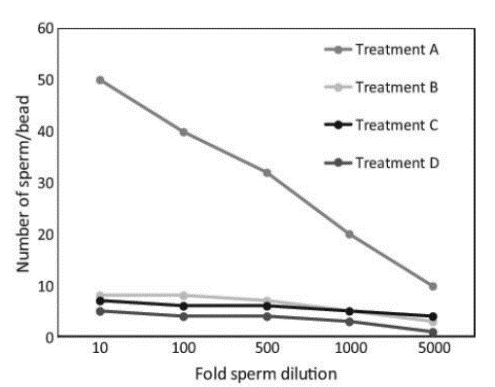#Question id: 12960
#Unit 10. Ecological Principles
The Norway rat (Rattus Norvegicus), a widespread pest, was controlled for about a decade by the anticoagulant warfarin. This chemical substance, placed in food pellets, is absorbed by the intestinal tract and inhibits the clotting of blood. After a population decline for about 10 years, rat populations increased and stabilized. In one European population, as illustrated in the graph below, the percentage of rats resistant to warfarin has remained fairly stable over a number of years.
Resistance to warfarin is governed by a dominant autosomal gene, R. More than 15 percent of the resistant animals are heterozygous at this locus (Rr). The table below indicates the response to warfarin and relative reproductive fitness of individuals that are homozygous or heterozygous for the dominant gene (R). The RR individuals have a 20-fold increase in vitamin K requirement over individuals.
#Question id: 12958
#Unit 10. Ecological Principles
The Norway rat (Rattus Norvegicus), a widespread pest, was controlled for about a decade by the anticoagulant warfarin. This chemical substance, placed in food pellets, is absorbed by the intestinal tract and inhibits the clotting of blood. After a population decline for about 10 years, rat populations increased and stabilized. In one European population, as illustrated in the graph below, the percentage of rats resistant to warfarin has remained fairly stable over a number of years
Resistance to warfarin is governed by a dominant autosomal gene, R. More than 15 percent of the resistant animals are heterozygous at this locus (Rr). The table below indicates the response to warfarin and relative reproductive fitness of individuals that are homozygous or heterozygous for the dominant gene (R). The RR individuals have a 20-fold increase in vitamin K requirement over individuals.
Fitness is a measure of the reproductive success of a particular genotype. The highest fitness is 1.00.
The strong dependence of RR individuals on large quantities of vitamin K probably is responsible for
#Question id: 12762
#Unit 10. Ecological Principles
#Question id: 12758
#Unit 10. Ecological Principles
Refer to the following experiment, which is designed to test the co evolutionary relationships among an unpalatable butterfly (the monarch), a palatable butterfly (the viceroy), and a butterfly predator (the jay). Monarch butterflies are reared on three diets: milkweed (their natural food), cabbage, and cabbage treated with an extract from milkweed leaves. Viceroy butterflies, mimics of monarchs, also are reared on three diets: willows (their natural food), cabbage, and cabbage treated with an extract from milkweed leaves. In trial 1 of the first experiment, adult butterflies reared on a particular diet are presented one at a time at 1-hour intervals to jays and the jays are allowed to feed. Each jay is fed until it refuses to eat the butterfly presented, but no more than 12 butterflies are presented to a jay during a particular test. Five birds are used for each test; therefore, up to 60 butterflies can be consumed for each diet test. The observer records the actual number of butterflies eaten. In trial 2, the experiment is repeated 2 weeks later. In the second experiment, the butterflies are reared on the same diets as in experiment 1. However, when they are offered to jays, some jays receive a monarch reared on milkweed before being offered the butterflies reared on the experimental diets; the other group of jays is first given a viceroy reared on willow before being offered the butterflies reared on the experimental diets. The initial butterfly offered is included in the total number eaten, but no more than 12 butterflies are presented to each jay.
The experimental design and the data indicate which of the following about the jays?
#Question id: 12756
#Unit 10. Ecological Principles
Flycatcher birds that migrate from Africa to Europe feed their nestlings mostly with moth caterpillars. The data presented show the mean dates of egg laying, hatching, and fledging of flycatcher young, and the 1980 and 2000 peak mass of caterpillars.
The most likely cause for the shift in caterpillar peak mass is
#Question id: 12676
#Unit 10. Ecological Principles
Use the incomplete diagram below, illustrating some of the steps involved in eutrophication to answer the following questions.
What would be a likely entry for box B?

